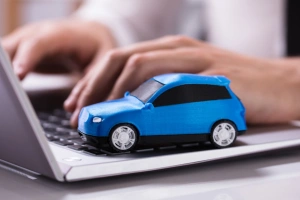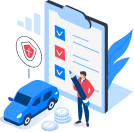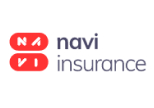Driving Tips: Safely Crossing through Flooded Roads
Essential Precautions to Navigate Water-Logged Streets
The 2018 floods in Kerala or the Mumbai floods of 2005 are testimony that humans are helpless in the face of nature and natural calamities. Climate change is real and the frequent occurrence of floods and cyclones are proof. In the face of something as inevitable as a flood due to incessant rains in low lying areas, residents must make themselves aware of the safety precautions they can take. One such precaution is learning to cross through flooded roads in your vehicle safely. This article is for you if you live in a flood-prone area.

Importance Of Flood Safety & Understanding Flood Risks
First things first. Before we act upon it, it is essential to be aware of some of the major flood risks and why flood safety is important in the long run. Like any natural calamity, floods may occur all of a sudden, without warning. The rise and fall of flooding heavily depends on the intensity of rains. One of the major actions to take as part of safety precautions is to keep track of the weather when it gets dangerous. Flooded roads are a major risk, especially to vehicle owners, which is why it is even more important to understand the concept of safely crossing through flooded roads.
Overview Of Common Flood Hazards
Flooding is an unfortunate incident that can potentially affect lives and prove to be fatal. Here are a few common flood hazards:
River Flooding
This occurs when consistent rain or snowmelt causes a river to exceed its capacity. Overbank flooding, a common type, happens when water rises and overflows the edges of a river or stream, affecting channels of all sizes.
Flash Flooding
Flash floods are characterized by intense, high-velocity torrents of water that occur in existing river channels with little to no warning, often due to rapid and excessive rainfall. They are dangerous because of the force of the water and the debris swept along. Camping or recreating along streams or rivers carries risk, as a small creek can swell into a raging river in under an hour if a thunderstorm lingers.
Coastal Flooding
Coastal flooding typically occurs with a land-falling tropical storm or hurricane. Storm surges and large waves pose the greatest threat to life and property along the coast, causing destruction of buildings, erosion, and damage to infrastructure. The destructive power of storm surges can undermine building foundations, leading to the demolition of homes and businesses.
Pre-Driving Preparations
If you plan on travelling through a flood prone area during your trip, it is important to be well prepared in advance.
Assess Weather & Road Conditions
Before you begin your journey, it is recommended to keep a watch over the news for weather warnings and colored zones. During the monsoon season in India, the Indian Meteorological Department (IMD) color codes flood warnings depending on their intensity.
Green (All is well): No advisory is issued.
Yellow (Be Aware): Yellow indicates severely bad weather spanning across several days. It also suggests that the weather could change for the worse, causing disruption in day-to-day activities.
Orange/Amber (Be prepared): The orange alert is issued as a warning of extremely bad weather with the potential of disruption in commute with road and rail closures, and interruption of power supply.
Red (Take Action): When the extremely bad weather conditions are certainly going to disrupt travel and power and have significant risk to life, the red alert is issued.
Check For Any Road Diversion Notifications By The Traffic Police
In the event of a weather emergency, the traffic police release notifications asking travellers to opt for alternate routes that helps avoid flood prone areas.
Keep Your Resources Ready, Especially While Travelling With Family
While driving during the floods, keep the following items handy.
-
First Aid Kit: Include bandages, antiseptic wipes, and any personal medications.
-
Flashlight: A reliable flashlight with extra batteries.
-
Non-perishable Food and Water: Keep snacks and bottled water in case you get stranded.
-
Emergency Blanket: For warmth if you are stuck for an extended period.
-
Portable Phone Charger: To keep communication lines open.
Vehicle Maintenance Checks
Regular maintenance checks are vital for ensuring your vehicle can handle adverse conditions:
-
Tires: Ensure they are properly inflated with adequate tread depth.
-
Brakes: Check brake functionality regularly.
-
Fluid Levels: Keep an eye on oil, coolant, and brake fluid levels.
Buy The Necessary Add-Ons For Vehicle Insurance
An engine is the most important and costly component of vehicles. If you live in a low-lying area prone to constant flooding, you must buy an extra engine protection cover and a roadside assistance cover with your car insurance. Most car insurance companies allow policyholders to do so. Having these vehicle insurance add-ons is a foolproof way to secure your vehicle and save you a lot of money in the long run. Although these add-ons invite additional premiums, it is recommended to buy them.
Understanding Flood Risks
Before embarking on your journey during floods, it is important to assess the following points:
Dangers of Driving Through Flooded Areas
Driving through flooded areas carry ample risk. The unpredictable nature of water currents can cause fatal damage to travellers, especially those driving in cars. Cars pose more risk to people’s lives than any other vehicle, as people tend to lock themselves within cars thinking it would be safer to remain inside than venture out. As a result, when water levels rise, many people panic and lock themselves in, which can prove to be fatal. Drivers must be aware of such dangers while driving through flooded areas.
How Floods Affect Road Conditions
As gentle as water is, it has a lot of potential to cause damages during floods, especially to roads. Floods can deteriorate the quality of roads, causing potholes and huge cavities where there were none.
Safe Driving Practices in Flooded Conditions
Maintaining Vehicle Control
It is absolutely essential to have complete control of the vehicle during a dangerous situation like flooding. It is natural for one to panic during such instances. The best thing to do is to take deep breaths, assess the situation, understand that several other lives depend on how you react to the situation and ensure you are in complete control of the vehicle.
Using Lower Gears And Steady Speed:
During an uphill climb, it is important to stick to the lower gears and remain steady with your speed.
Avoiding Sudden Movements
It is better to avoid making any sudden movements if the floods look menacing. Stay calm, try to think on how best to navigate the situation positively and take action.
Navigating Flooded Roads
Identifying Safe Routes
It is important to identify which are the safest routes. Ensure you have a physical map if your phone’s battery dies and mark the safe routes on the map by referring to your phone, in advance.
Recognizing Depth and Flow of Water
Understanding the depth of water is important in order to navigate safely. Consider buying physical tools if you can afford to buy or get hold of a strong, sturdy staff to check the depth of water before venturing into it.
If you find yourself needing to cross flooded roads, adhere to these safe driving practices:
-
Avoid Driving Through Flooded Areas: If possible, do not attempt to drive through any flooded area. Turn around if you see water covering the road.
-
Drive Slowly: If crossing is unavoidable, maintain a slow speed (around 3-4 mph) to avoid creating a bow wave that could flood your engine.
-
Stay Centered: Water tends to be shallower in the center of the road; drive there if it’s safe.
-
Test Brakes After Crossing: Once out of the flooded area, gently test your brakes to ensure they are functioning correctly.
-
Avoid Sudden Movements: If you are trapped in a flooded area, it would be a good thing to avoid any sudden movements as roads can pave in and cause huge, undetected cavities, which can be fatal to your life.
Inspecting Your Vehicle After Crossing Flooded Areas
After navigating through flooded roads, inspect your vehicle for potential damage:
-
Check for Water Damage: Look for signs of water entering the cabin or engine compartment.
-
Inspect Electrical Systems: Ensure all electrical components are functioning properly.
-
Brake Functionality: Make sure brakes respond correctly after being submerged.
-
Additional Safety Tips
-
Stay Calm: If your vehicle stalls in floodwaters, do not panic. Stay inside until help arrives if it’s unsafe to exit.
-
Avoid Using Your Phone While Driving: Focus on driving safely rather than being distracted by calls or texts.
-
Keep Windows Closed: This minimizes the risk of water entering your vehicle if you encounter sudden flooding.
Additional Safety Tips
Avoiding Common Mistakes
Many drivers make critical errors when faced with flooded roads:
Underestimating Water Depth: Never assume you know how deep the water is; it can be deceptively deep
Underestimating current strength: One of the common mistakes most drivers make is underestimating the strength of the current. Flooding can be unpredictable and the current might gain strength when you least expect it.
Driving Too Fast: Speeding through flooded areas increases the risk of losing control.
Ignoring Road Signs: Always heed road closure signs; they are there for your safety.
Legal and Insurance Considerations
Understanding Liability in Flood Situations
If you own car insurance, you must take the time to understand your policy coverage for natural disasters like floods. Although flood damage is covered by comprehensive car insurance policies, not all damages are compensated for. Certain insurers may need you to buy add-on covers like engine protection cover to help you with engine replacement/repair. If your insurance company does cover damages to you or your car during floods, you must take the time to understand terms like deductibles, own damage coverage, IDV, total loss while things are well. In the face of natural calamities, such information is crucial and having clarity on it will help you in the long run.
Ensuring Adequate Insurance Coverage
If you live in an area prone to natural calamities, you must own a comprehensive car insurance policy that covers damages due to floods, earthquakes, etc. A third-party car insurance alone will not do. Conduct a thorough study of the current insurance market and buy one only if the coverage policy includes a cover for all the possible scenarios applicable to your case.
Conclusion
Driving through flooded roads is fraught with risks that can lead to accidents or vehicle damage. By understanding flood safety measures, preparing adequately before driving, practicing safe driving techniques during floods, and inspecting your vehicle afterward, you can significantly reduce these risks. Always prioritize safety over convenience; if in doubt about road conditions during heavy rains or floods, it is best to find an alternative route.
FAQs
What should I do if my car stalls in floodwater?
If your car stalls in floodwater, evacuate immediately if safe to do so and move to higher ground. Do not attempt to restart the engine as this may cause severe damage.
How deep can water be before it's unsafe to drive?
Generally, water deeper than six inches poses a risk for most vehicles; even shallow water can cause loss of control.
Can I drive through moving water?
It is highly unsafe to drive through moving water as it can sweep away vehicles easily; always avoid such situations.
How can I prepare my car for potential flooding?
Keep an emergency kit in your car, ensure regular maintenance checks are done on tires and brakes, and stay informed about weather conditions before traveling.
What should I do if I encounter a flooded road?
The safest option is to turn around and find an alternative route rather than attempting to cross a flooded area.














































